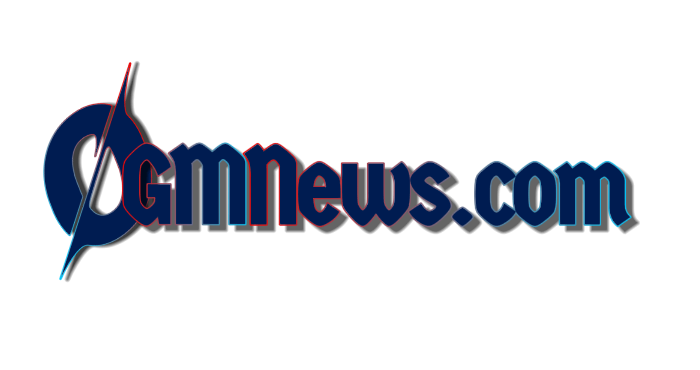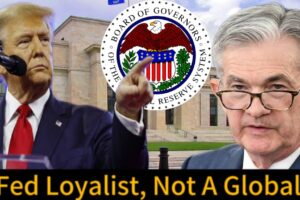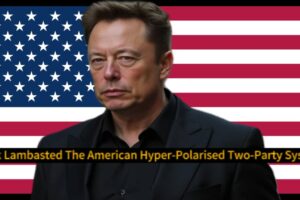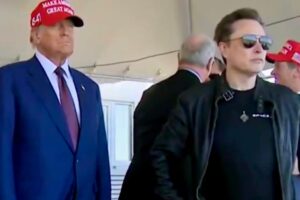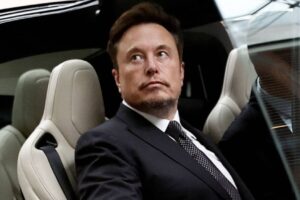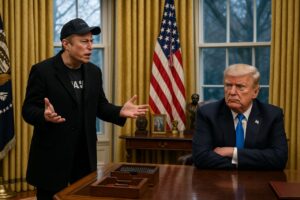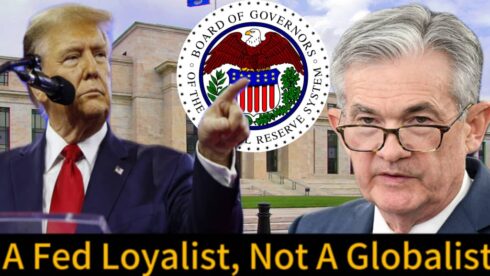Trump’s $1.2 Trillion Qatar Deal is Shady | In a statement that has ignited waves of skepticism and ridicule, former President Donald J. Trump proclaimed via social media that he had secured a “historic $1.2 trillion economic commitment” from the State of Qatar. The announcement, presented as a resounding victory for U.S. diplomacy, has quickly unraveled under scrutiny—not just for its audacity, but for the mathematical impossibility it implies.
Many Americans found themselves incredulous at the sheer scale of the number. Qatar, a wealthy but small nation with a population under 2.7 million, has a GDP hovering around $208 billion, according to projections by Focus Economics. The country’s entire national budget for 2025 is estimated at just $57.7 billion, making Trump’s $1.2 trillion figure not only implausible but economically absurd—at least on the surface.
Critics, including policy analysts and economists, have labeled the announcement as misleading at best and deliberately dishonest at worst. The discrepancy between Qatar‘s fiscal capabilities and the scope of the supposed commitment underscores what many now describe as another case of exaggerated Trumpian self-promotion.
Qatar’s Real Numbers: A Case Against the Trillion-Dollar Mirage
Trump’s $1.2 Trillion Qatar Deal is Shady | To understand the absurdity of the claim, one need only examine Qatar’s national finances. The 2025 budget pegs government revenues at $53.8 billion, against expenditures of $57.7 billion, resulting in a projected deficit of $3.6 billion. These figures, though robust for a nation of Qatar’s size, do not even approach the scale required to substantiate a $1.2 trillion agreement.
Moreover, Qatar’s GDP per capita—among the highest in the world—stands at roughly $87,000, due to its oil wealth and small population. While this reflects considerable national wealth, it still does not imply an ability to invest over a trillion dollars in a foreign partnership within a reasonable time frame.
By contrast, the United States, with a vastly larger population and economy, has a GDP per capita of about $78,000 and still struggles to manage its fiscal commitments. So how could a country the size of Qatar—with a GDP nearly 90% smaller than the U.S.—realistically finance a deal that surpasses its total economic output many times over?
Breaking Down the Qatar Deal of $1.2 Trillion: Jobs, Jets, and Jargon
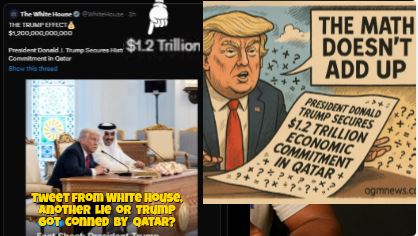
Trump’s $1.2 Trillion Qatar Deal is Shady | According to the White House breakdown, the $1.2 trillion figure includes a broad mix of commercial agreements, projected job growth, and long-term economic activity—rather than a single direct investment. One of the headline components is a $96 billion aircraft deal involving the purchase of up to 210 Boeing aircraft by Qatar Airways. This alone is said to support about 154,000 U.S. jobs annually.
In addition, Qatar has signaled intentions to invest in U.S. defense industries, including a $1 billion purchase of counter-drone systems from Raytheon and $2 billion in drones from General Atomics. There are also talks of $38 billion in infrastructure enhancements at Al Udeid Air Base and related security projects.
Yet even collectively, these agreements don’t sum to $1.2 trillion in direct cash flow. Instead, the figure appears to represent projected economic impact over a vague and undefined period. This includes supply chain operations, secondary markets, and indirect benefits, making the number more speculative than substantial.
Ethics and Optics: The $400 Million Jet and a Cloud of Controversy
Trump’s $1.2 Trillion Qatar Deal is Shady | Beyond the numbers, the announcement has reignited ethical concerns, especially after reports surfaced that Trump had accepted a $400 million luxury jet from Qatar. Critics argue that such a gift from a foreign government—particularly one seeking defense contracts—presents an egregious conflict of interest.
The timing and context of the gift raise questions about the propriety of U.S. foreign policy decisions being influenced by personal gains. Legal experts and watchdog groups have warned that the deal and its related optics could signal deeper issues of foreign entanglement and personal enrichment while in or after public office.
These concerns mirror longstanding critiques of Trump’s transactional approach to governance—where personal benefit and political theater often blur the lines between diplomacy and self-promotion.
The Bigger Picture of $1.2 Trillion Qatar Deal or Illusions
Trump’s $1.2 Trillion Qatar Deal is Shady | While the “$1.2 trillion commitment” may sound impressive, it ultimately reflects more of a branding exercise than a concrete economic reality. Framing long-term economic projections as immediate wins creates a misleading narrative that serves political messaging, not public understanding.
Yes, Qatar is a wealthy nation, and its long-term engagements with the U.S. are valuable. But the idea that a nation with less than $60 billion in annual spending capacity could make a trillion-dollar commitment—without considerable skepticism—is laughable to many, as critics have not hesitated to point out.
In the end, it seems the only thing historic about this deal might be the boldness of its exaggeration. Whether a strategic bluff or a deliberate con, one thing remains clear: the math simply doesn’t add up.
Final Word on Qatar Deal of $1.2 Trillion: When Optics Outpace Facts
Trump’s $1.2 Trillion Qatar Deal is Shady | The backlash to Trump’s announcement reflects a growing demand for honesty and clarity in political communication—especially on matters as significant as international trade and defense. While it’s common for governments to tout the economic potential of international deals, dressing projections up as secured investments misleads the public and muddies accountability.
For now, Americans may be left drinking what critics call the “Kool-Aid” of inflated patriotism—but more are beginning to see through the sugar coating. As one observer aptly put it: If this is a deal, it’s one that only a con man could believe—and only the gullible could applaud.
